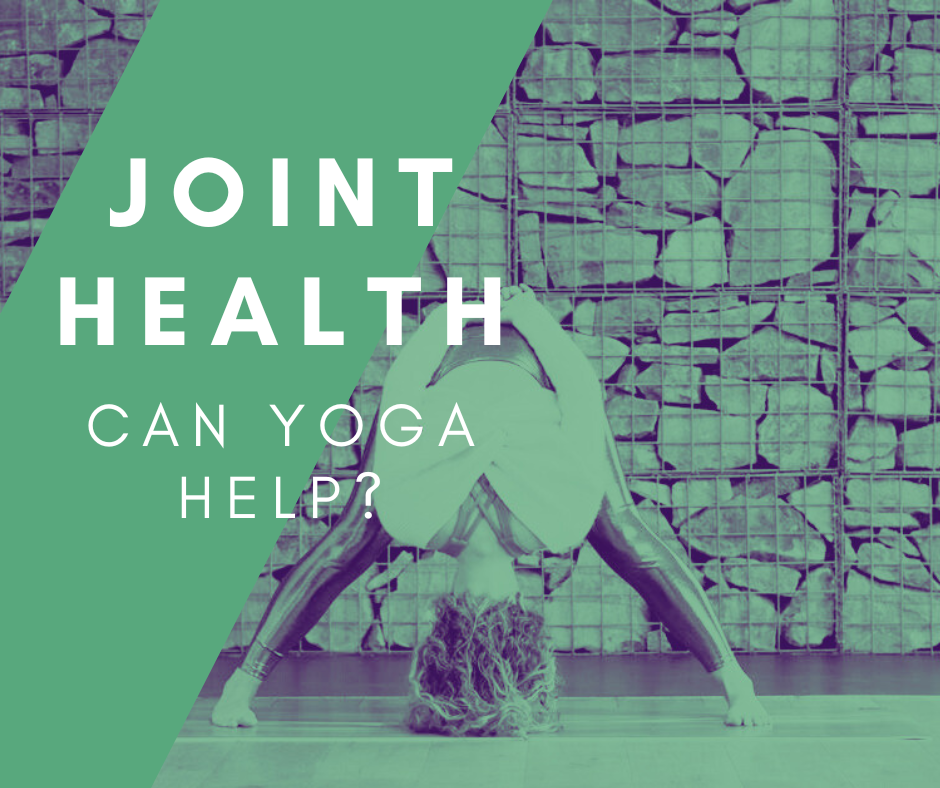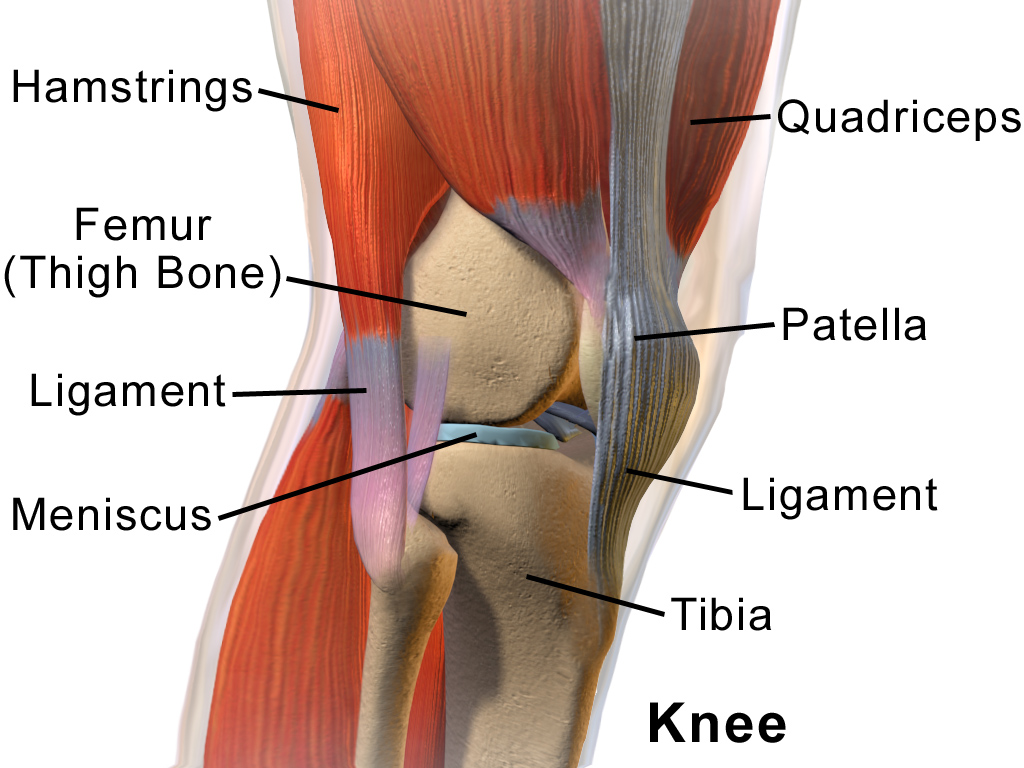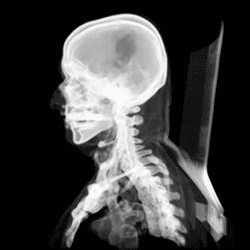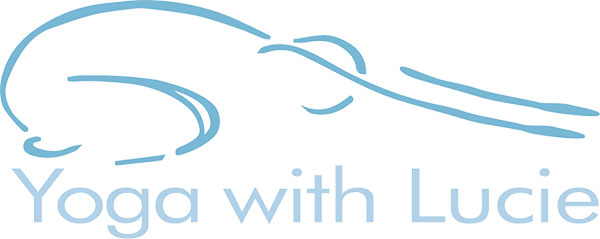How to keep joints healthy

Are your joints sore? Is sitting down, getting up, walking up stairs a seesaw of stiffness and pain?
When our joints are working we move with relative ease, mainly unaware of our every move. However when our joints are stiff or painful, it is another matter! Getting dressed can be exhausting and we tend to move less, avoiding pain.
This article is to explain what a joint is, the main types of joint and how our joints end up working. I’ll offer practice suggestions on what we can do to keep our joints healthy and explain why we should move and stretch regularly in gentle ways. Joints are part of our health focus in Spring, so it is essential for our practice and daily life.
What is a joint?
A joint is the meeting point between two bones or cartilage and bone. A good example is our knees. Knees are the meeting between the thigh bone (femur) and shin bone (tibia) with two thick pads of cartilage (meniscus) in between. Thick straps of connective tissue (ligaments) criss cross in between and either side to maintain stability and there is a knee cap bone (patella) to protect. The ligaments are tough and smooth to minimise rubbing and to enable smooth gliding of the bones in movement and posture. The ligaments attach bone to bone and muscle to bone as this diagram shows. This is a healthy knee.

https://en.wikipedia.org/wiki/Knee
Types of joint
There are 2 ways to talk about joints
- In terms of function
- In terms of structure
Immovable joints
Let’s look at function. Some joints are immovable. An example are the bones in our skull. They were separated by small ligaments to enable our birthing and as we develop, these knit together. However in tripod headstand, I feel shifts throughout my head and sinuses from both the pressure and release coming out of the pose. I’m wondering if hypermobile people may have some tiny movement here. If you know, let me know!

By Arielinson – Own work, CC BY-SA 4.0, https://commons.wikimedia.org/w/index.php?curid=50903553
Slightly movable joints
Onto slightly movable joints. Good examples are the joint at the front of the pelvis, the pubis symphysis and sacrum in the lower back. The pubis symphysis is a pad of cartilage connecting the two front hip bones that allows limited movement as we move and walk. Did you know, in pregnancy this joint softens to enable birth? Unfortunately some mothers experience discomfort or even pain as the baby grows bigger and the pelvis can twist. Movement therefore needs to be limited to legs close together and only forward and back or even braced using a strap to minimise further twisting or pulling.

Another example are the joints between our lower back (sacrum) and the hips (ilium). These joints can be painful especially if tight muscles pull and twist the pelvis, or there is a habit of sitting tucked under slouched and lack of core engagement. If you have experienced back or pelvic pain this may be the cause. Scroll down to find out about stretches, core work and movement to help ease a stiff and achy lower back
Freely movable joints
These are the joints that can move either as a hinge, like our elbows and knees, or fully in the round, like shoulders, ankles and wrists. Our spine has a mix of moving joints, dependent on where the vertebrae location. Our lower back (lumbar) is limited forward and backward flexion. These joints are our lifting and carrying joints so need to be stable. Whilst our mid back (thoracic) can move like this, it is restricted to protect the organs in the ribcage, so instead this is the twisting part of the back to enable us to turn from above the waist to look around and behind. The neck (cervical) has freer movement again with a pivoting movement and flexion forward, backward and side to side.
How our joints end up working
Our joints enable safe movement. If we move regularly, keep hydrated, eat healthily, they should work fine, should they not?
However as adults, we tend to live our lives in predictable habitual ways, linked to our work and family commitments. We spend much more time in front of a screen, both at work and for relaxation. As a result, muscle movement is limited day in day out, from the forward fixed gaze of our eyes to the tucked under pelvis and accompanying tight hips and hamstrings from all that sitting.
In contrast, as a parent, you may have found yourself carrying a wee one on a hip whilst having the other arm free for your other child or pushchair. Always on the move, often stooped to take care of your growing child.
Daily posture & movement habits
Life stages and events weave their way through our days and body. Unless we take stock and practice otherwise, we store these movement patterns like rock strata through the layers of muscles, connective tissue and posture. It can be useful to think of ourselves as geological, with different life stages bedding down their particular stress and patterns of holding in our beautiful life enriched bodies.
How Yoga Helps
Yoga works from the inside out. From embedding new better alignment (for example, sitting up tall, untucking the pelvis, rolling the shoulders back and down, drawing the chin back. Now do you feel better?), to improving breathing practice, where we actively switch our nervous systems into a restful and soothing parasympathetic mode by deepening, steadying our breath; the benefits are numerous and life changing.
Breathing power
Sore joints and tight muscles can be a sign of years of accrued stored stress, held tightly inside as a coping mechanism. When we start to breathe slower, deeper, longer, this is one way to reassure our nervous systems that all is well and a lot of deeply entrenched tension can soften away. Why not stop and take ten slow breaths now? Notice what happens as you breathe. Mindful and regular practice is important to create lasting change.
Physical rebalancing
Pain also be postural, so the Ha and Tha (Sun and Moon) of yoga, Yin and Yang of Qigong offer wonderful solutions of rebalancing movement and sequences. To explain better, in the gym we may find ourselves doing a repetitive movement like squats up and down, to strengthen the legs and glutes. These repetitive movements may build muscle but often the counter movement or stretch of that muscle is not included there and then but done at the end for a few minutes. Or the focus is on the count and not the mindful process of movement in and out with the breath, so we lock our joints or lose good alignment.
Moreover if we have a desk based job, we compound our imbalances by sitting for eight hours, up to five days a week. Postural habits like slouching, rounding our shoulders, the height we have our wrists for typing, our knees for tucking under our desks, sticking out our chin to peer at the screen can become locked and exacerbate joint stiffness and pain.
Part of our self care, therefore, is to move our bodies in a range of movements and sequences regularly, mindfully as much as we can, to actively redress the imbalance daily life patterns entrench.
In yoga, we may also practise a squat type movement, for example Utkatasana, Chair Pose, but it will be followed by a forward fold or similar pose to stretch out the glutes and hamstrings. When we practise the flow of contraction or engagement followed by stretching, lengthening, it counters our limited movement habits. We begin to create some space in the body, lengthen muscle fibres, increase range of motion in our joints. We keep joints soft even when limbs are straight to encourage good energy flow. This in turn enables the energy flow to improve through the whole body on every level: physically, emotionally and mentally. How many of us have gone into yoga class feeling low energy, tight, stressed and come away feeling an inch taller, calmer and happier?
Energy flow
In essence, we have evolved from a basic tube to a convoluted network of tubes. Energy is designed to flow and change so it can continue to flow and change. Joints enable the structural network of our skeleton to move through our life stages – being born, breathing, taking in nourishment, crawling, walking and so on – and protect our organs. Joints are like the gates through which our life energy must flow, so it is key to keep them hydrated, mobile, stable and supported. We are designed to move. Regular gentle movement is important, as is keeping muscles strong around our joints so we do not lean on our skeleton alone for support and wear joints out. Yoga and qigong are wonderful movement practices that invite in mindfulness, to meet ourselves as we are and move from that acceptance, as opposed to not being enough and pushing for more. From that foundation we can being to build up strength, stretch the muscles and release a lot of stuck energy or stress.
Key tips
- Hydration – drink often throughout your day
- Breathe – take ten slow breaths regularly throughout your day
- Notice your breathing, your posture, tightness or stress and where it is held in the body
- Ask yourself, ‘What do you want to change in this moment?’
- Move – any movement that feels good, do it, commit to regular movement that disrupts your entrenched postural habits or limited menu of movement. Be mindful and take responsibility for your beautiful body. You will thank yourself for it!
- Get good quality rest and sleep
- Come to class – you will feel taller, brighter, lighter, stronger and more grounded.
If you would like to bring back balance into your day, why not join my Beginners/Get back on the mat course starting Mondays 6.30-7.45pm? Find out more here
